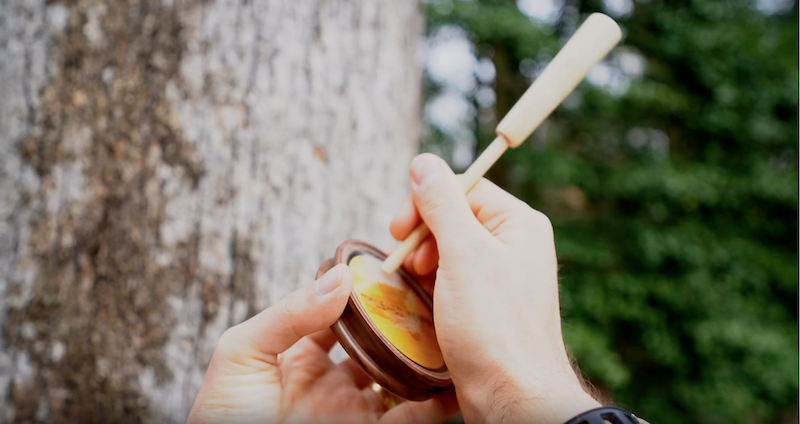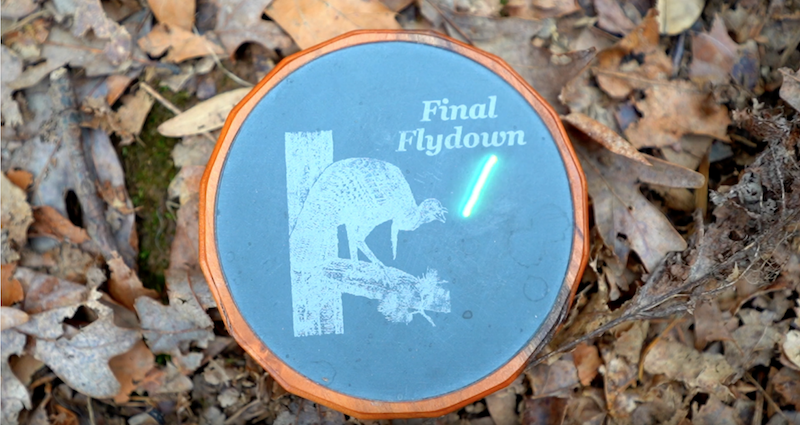Calling in a mature gobbler generates a special kind of excitement during spring turkey hunts. It’s guaranteed to jack up your heartrate, and make you come back for more.
To enjoy turkey hunting’s spring tradition, you don’t have to be an expert caller. You do, however, need the right tools and know how to use them.
One of turkey hunting’s most versatile calls—and the easiest one for beginners to learn—is the slate call, which is also known as a friction call or pot call. It produces every call, loud or subtle, for coaxing gobblers in close. Slate calls consist of a pot and striker. The pot is a wood or plastic body that holds a slate, crystal, glass or aluminum surface. Pots and strikers are available in various woods to customize the sounds.
You can choose your slate call at a nearby archery shop, which you can locate here.

Sand down the face of your call before you start using it. Photo Credit: ATA
Once you have your slate call, start practicing and learning how to make turkey sounds. Before starting, use sandpaper or a Scotch Brite pad to prep the slate’s surface. Most slate calls come with a small piece of sandpaper or scratchpad to get you started.
To prep your slated, don’t sand in a circular motion. Sand back and forth to create straight lines across the surface. You’ll stroke your striker against the grain you created to make realistic, consistent turkey sounds. Once you’ve prepped your call, you’re ready practice.

Hold the striker like a pencil and strike the top right hand corner of the pot. Photo Credit: ATA
Hold the pot with your nondominant hand, using the tips of your fingers on its outer rim. The sound comes from the bottom of the pot, so you’ll muffle the sound if you rest the pot in your palm.
Hold the striker as you would a pencil in your dominant hand, and angle it at about 45 degrees to the slate’s surface. If you grip the striker toward the tip you’ll produce higher-pitched sounds. If you hold the striker higher, you’ll produce deeper sounds. Most people find the sweet spot about 1½ inches from the striker’s tip.
Pro tip: Don’t lift your striker off the surface when calling. Keeping it pressed against the surface helps prevent unintentional sounds and produces better sounds.

Strike the call at different angles or frequency to produce different calls. Photo Credit: ATA
The Yelp: This common sound is made by hens, the female turkeys. Hens yelp in spring to communicate with toms or gobblers, the male turkeys. To make a yelp, apply light pressure with the striker while making small, tight ovals with its tip. A larger oval produces sounds more like those of a jake or tom yelp.
The Cutt: If a yelp means “hello,” a cluck means, “HELLO!” Hens cluck to get a tom’s attention, which makes the cluck a great call when hunting. Hens usually make several clucks in quick succession. To make a cutt, apply pressure and snap the striker toward you. If you make unintentional squeaks don’t sweat it. Turkeys do the same thing when cutting.
The Purr: Just as cats purr when content, turkeys purr while feeding and feeling secure. This soft vocalization is great for coaxing skeptical toms. To complete the illusion of feeding turkeys, scratch nearby leaves with a stick in between your soft purrs. To make a purr, apply light pressure and drag the striker tip in a straight line. Once you master this call, make a sequence of purrs by changing the striker’s direction.
The best way to learn about turkey sounds is to listen to them. You can hear all of these calls and many others on the National Wild Turkey Federation’s website. Click here to listen.